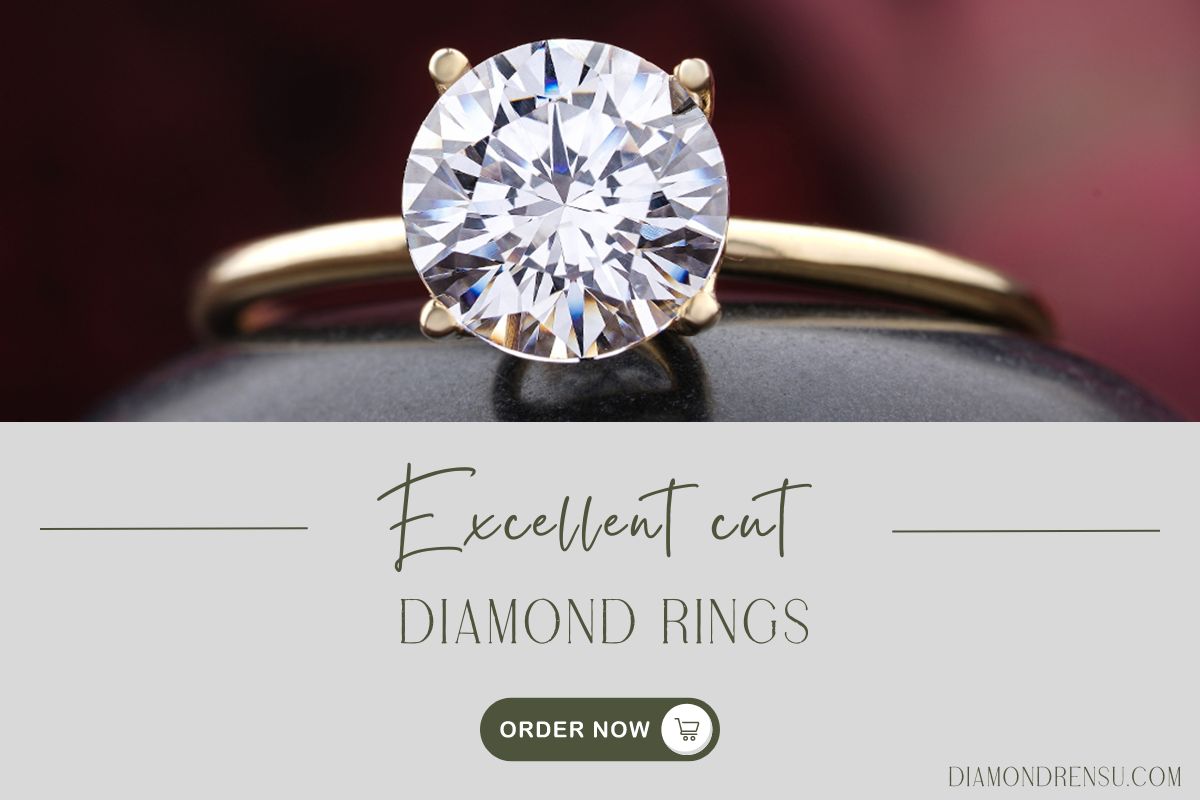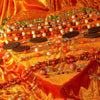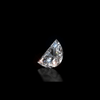
Can a Diamond Break: Debunking Durability Myths
Diamonds, renowned for their unmatched hardness, have long been symbols of durability and permanence. My background in gemology has taught me that while they are the hardest natural material on the Mohs scale, this does not render them indestructible. Many mistake hardness for toughness, but hardness primarily refers to a gemstone's ability to resist scratches, which in the case of diamonds, is exceptionally high. This quality, however, does not equate to an immunity to breaking or chipping; the molecular structure that grants them their famed hardness also includes planes of weakness known as cleavage lines.
In my experience with jewelry, these cleavage lines can be a diamond's downfall if struck with a significant force at the right angle. Even though it takes considerable effort, a direct blow to these weak spots can cause a diamond to chip or even split. It's a rare occurrence but one that's entirely possible due to the structured way diamonds crystallize. The likelihood increases if there are pre-existing internal flaws or inclusions within the gemstone.
Caring for diamond jewelry, therefore, involves more than just protecting it from scratches. As someone who advises on jewelry maintenance, I always recommend being mindful of the activities undertaken while wearing diamonds. The risk of impact during physical activities or against hard surfaces can pose a threat to their integrity. Knowing this, it becomes paramount to handle diamond jewelry with an awareness of its True vulnerability to ensure that these precious gemstones maintain their brilliance and form for a lifetime.
Understanding Diamond Hardness and Toughness
I'll explore the inherent properties of diamonds that contribute to their reputation as the hardest natural material on Earth, and I'll clarify why that doesn't make them indestructible.
The Mohs Scale of Mineral Hardness
The Mohs Scale of Mineral Hardness is a qualitative ordinal scale that characterizes the scratch resistance of various minerals through the ability of a harder material to scratch a softer one. On this scale, which ranges from 1 to 10, diamonds are ranked at the top with a hardness of 10. This means that diamonds can scratch any other mineral, but no other natural substance can scratch a diamond.
Diamond's Structural Properties
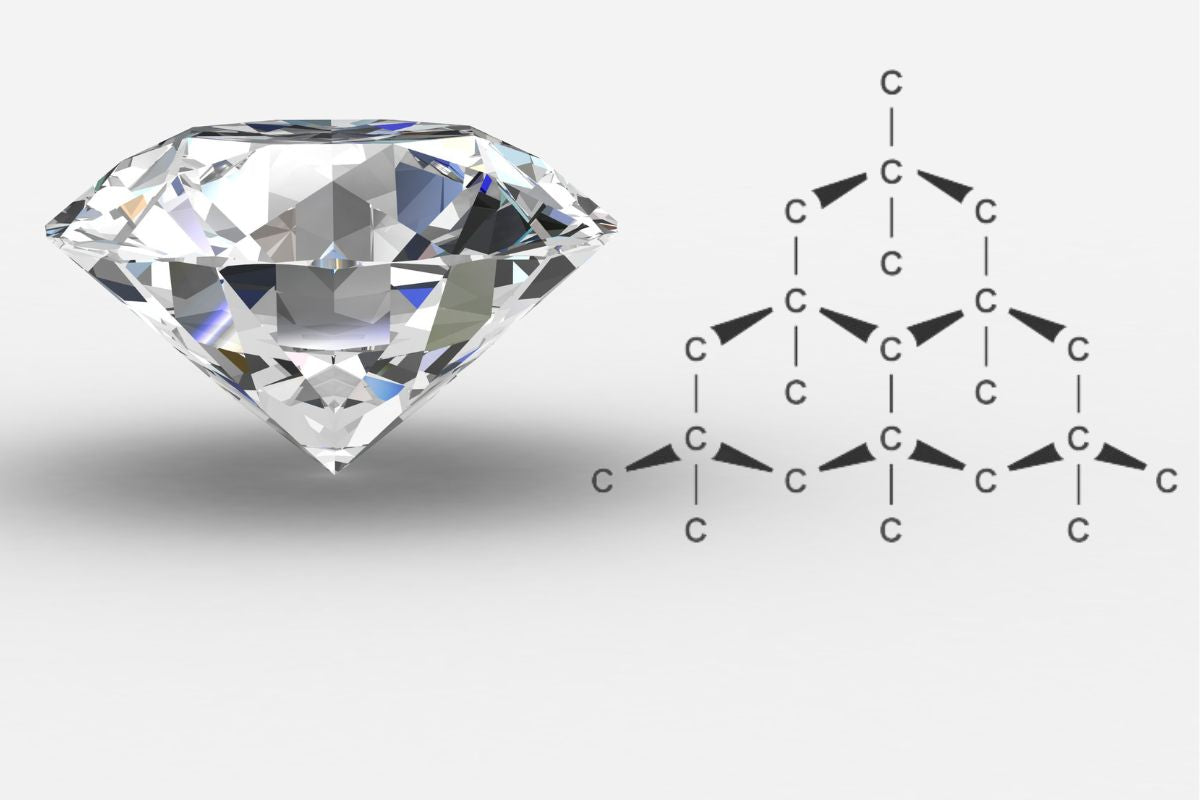
The structure of a diamond is formed by carbon atoms linked together in a strong lattice arrangement. This network creates an incredibly rigid and dense three-dimensional structure, which gives diamonds their renowned hardness. Under immense pressure, carbon atoms bond in a way that maximizes the strength of these connections.
Crystal Structure
Diamonds have a cubic crystal structure with each carbon atom bonded to four other carbon atoms in a tetrahedral arrangement.
Hardness
Diamonds are the hardest known natural material, scoring 10 on the Mohs scale of mineral hardness.
Dispersion
Dispersion refers to a diamond's ability to separate white light into its spectral colors, giving it fire and brilliance.
Refractive Index
Diamonds have a high refractive index, meaning they bend and reflect light more than most other gemstones.
Cleavage
Diamonds have perfect cleavage in four directions along the octahedral planes, which allows them to be cut and polished with precision.
Toughness vs. Hardness
While the two terms are often used interchangeably when referring to the durability of minerals, toughness and hardness are distinct properties. Toughness refers to the ability of a material to absorb energy and resist breaking, chipping, or cracking under force. Although diamonds excel in hardness, their toughness is a separate consideration. The cleavage planes within their structure—areas where the bonds between carbon atoms are not as strong—can lead to breakage if struck with sufficient force.
Common Causes of Diamond Damage
| Cause | Description |
|---|---|
| Impact | Direct force or pressure on the diamond can cause chips, cracks, or breakage. |
| Fractures | Internal or surface-reaching fractures can weaken the diamond's structure. |
| Chemicals | Exposure to harsh chemicals or acids can damage the diamond's surface or setting. |
| Heat | Extreme heat can alter the diamond's color or clarity and may cause fractures. |
| Abrasion | Repeated contact with abrasive surfaces can scratch or dull the diamond. |
While diamonds are renowned for their durability, certain conditions can compromise their integrity. I will explore how impact, inherent weaknesses, and daily wear can lead to diamond damage.
Impact and Pressure
My experience tells me that when subjected to significant force or sudden impact, diamonds can sustain damage. Although diamond is the hardest natural substance on Earth, it can break or chip if struck with enough force. The risk of such damage increases if the impact occurs at a diamond's natural weak point, usually where the atomic structure is disrupted during the stone's formation.
Fractures and Inclusions
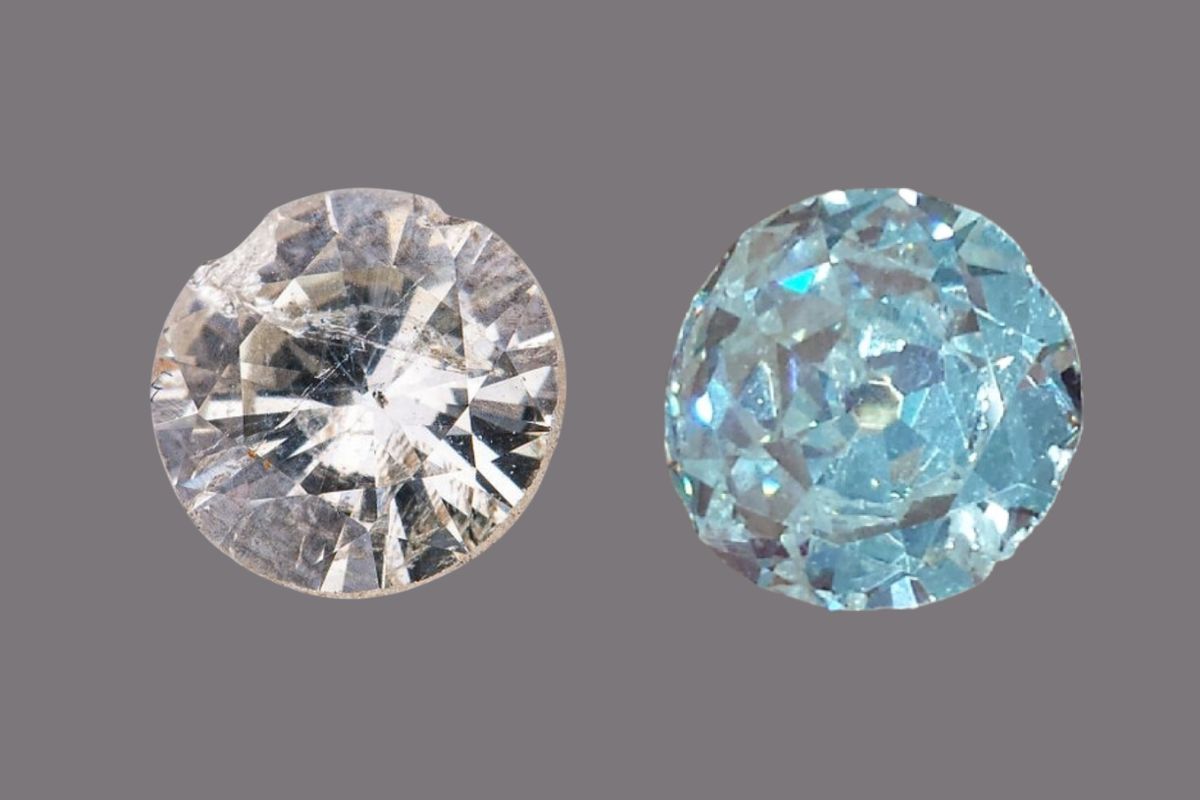
Diamonds can have internal features, known as inclusions, that affect their internal structure. Inclusions may lead to areas of weakness, making these diamonds more susceptible to fracture under less force than would be required for a pure diamond. The location, size, and number of these inclusions influence the risk of damage occurring within the diamond.
Chipping and Cracking
The everyday wear and tear of diamond-set jewelry can expose stones to conditions that may cause chipping and cracking. Sharp, direct blows especially near the girdle (the widest part of the diamond) greatly increase the chances of such damage. A well-cut diamond should be more resistant to chipping, but no diamond is impervious to the risk when faced with sufficient force or pressure.
Preventing Damage to Diamonds
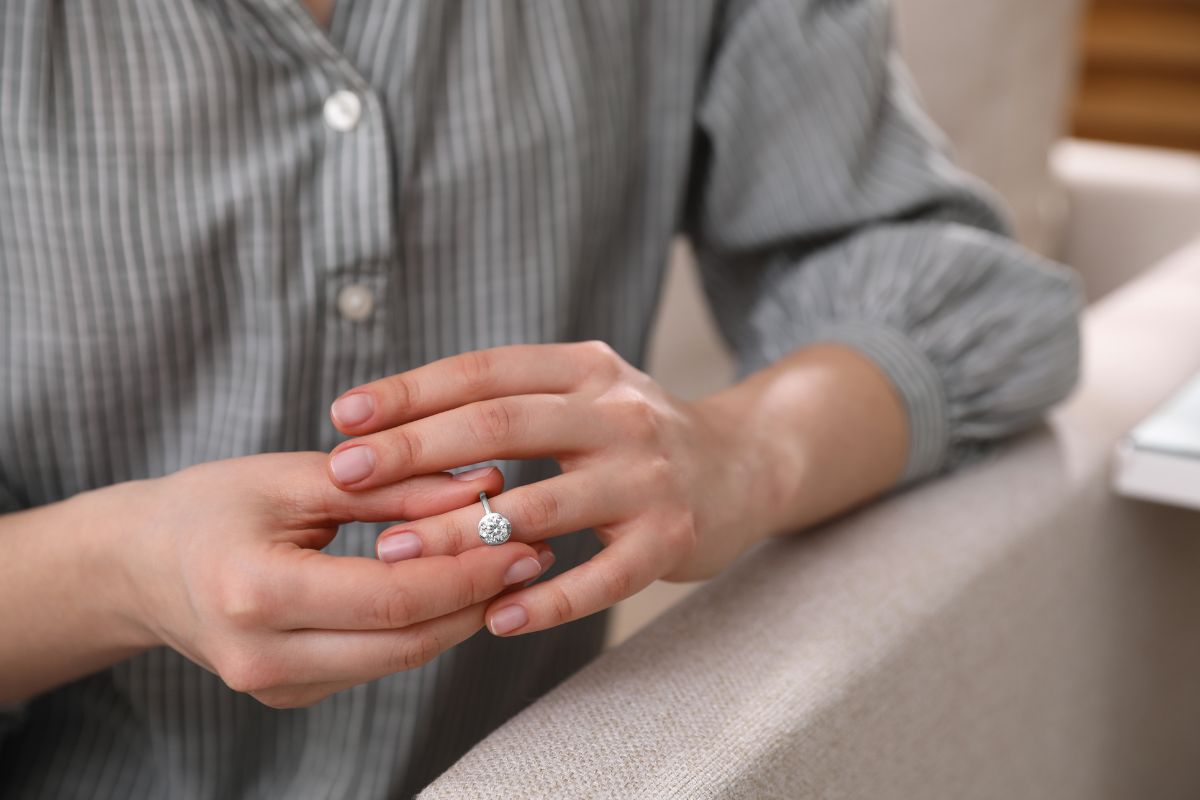
When it comes to diamonds, their brilliance and durability are renowned, but they are not impervious to damage. I'll explain how to ensure these precious gemstones are well-protected and maintained.
Proper Care and Handling
I understand that daily activities can expose diamonds to potential harm. To prevent damage, I'm meticulous in my routine:
- Remove jewelry before manual tasks to avoid hard impacts.
- Clean diamonds regularly with a solution of warm water and mild dish soap, using a soft brush.
- Check for loose stones periodically by gently shaking the piece near my ear to detect movement.
The Role of Jewelry Settings
Having a secure setting is essential for the protection of my diamond. A well-constructed setting will:
- Use sturdy prongs to hold the diamond firmly in place.
- Feature multiple contact points, which can better distribute force and reduce the likelihood of a single prong failing.
- Avoid very thin girdles, as these can increase the risk of chipping.
Protective Measures and Insurance
To safeguard my investment and peace of mind, I take additional protective steps:
- I choose a comprehensive jewelry insurance policy to cover unintentional damage or loss.
- For added protection, I wear a sports band while engaging in physical activities to shield my jewelry.
- When I'm not wearing my diamonds, I store them securely in a jewelry box with separate compartments or pouches.
By diligently following these guidelines, I help ensure my diamonds remain as timeless and brilliant as the day they were crafted.
Role of Jewelry Design in Diamond Durability
The design of jewelry, especially settings and ring structures, significantly impacts the durability of a diamond. Designer choices can either enhance the stone's security or leave it vulnerable to damage.
Selecting the Right Setting
When I select a setting for a diamond, I focus on providing maximum protection for the stone. Not all settings offer the same level of security; for instance, a bezel setting encases the diamond's edges and provides excellent protection against chipping or breaking. This contrasts with a prong setting, which exposes more of the diamond but may allow more light to pass through, enhancing the stone's brilliance. My choice hinges on the necessity to guard the diamond's girdle, the most susceptible part to chipping, without compromising its beauty.
- Bezel Setting: Best for protection
- Prong Setting: Best for brilliance
Understanding Ring Design
The ring's design is not just a matter of style—it's integral to the diamond's longevity. I take into account the wearer's lifestyle, anticipating the ring's exposure to potential impacts. For diamonds with cleavage lines, which are their planes of weakness, ensuring stability in the design is crucial to minimize the risk of cleavage from accidental blows. For example, the presence of a halo can provide additional stability and protect the diamond from side impacts, an important consideration for engagement rings that are worn daily.
I design rings with the following principles:
- Security: Ensure settings are robust and diamonds are well-secured.
- Stability: Offer support to the diamond, especially around cleavage lines.
- Lifestyle Suitability: Adapt the ring design to the anticipated daily wear and tear.
Through thoughtful design that prioritizes these aspects, I safeguard the diamond's durability while showcasing its natural beauty.
How to Handle a Damaged Diamond

When I handle a damaged diamond, my priority is to assess the extent of the damage and explore the most appropriate solutions to restore or leverage its value.
Inspection and Consultation with a Jeweler
My first step is to visit a trusted jeweler for a thorough inspection. An expert will evaluate my diamond's condition using specialized tools and techniques. The jeweler will check for:
- Chips
- Fractures
- Loose settings
Their expertise ensures that the damage is accurately assessed, and they can advise on the best course of action.
Repair and Recut Options
Once the damage is assessed, my jeweler will present me with options:
Repair:
- Minor surface polishing for superficial scratches
- Recompact any loose parts in the setting
Recut:
- Removing the damaged section and reshaping the diamond
- The recut may result in a smaller, but still brilliant, gemstone
They will ensure the integrity of the diamond is maintained while enhancing its appearance.
Upgrading or Replacing the Diamond
If the damage is beyond repair, or I wish to upgrade, the jeweler and I will discuss replacing or upgrading the diamond. I will consider:
- The value of upgrading versus the cost of repair
- My budget for a new diamond
- The style and quality of replacement diamonds
An exchange or upgrade can sometimes offer a fresh start with a new gem that better fits my current preferences or lifestyle.
Myths and Misconceptions About Diamond Breakage
Myth 1: Diamonds are Unbreakable
Many people believe that diamonds are indestructible, but they can chip or crack under certain conditions.
Myth 2: Only Large Diamonds Break
While larger diamonds may be more noticeable when they break, smaller diamonds are also susceptible to breakage.
Myth 3: Diamonds Cannot Scratch Each Other
Diamonds can scratch other diamonds, especially if they have surface imperfections or inclusions.
Myth 4: Prongs Always Protect Diamonds
While prongs can help secure a diamond in place, they may not prevent breakage if the diamond receives a strong impact.
Myth 5: Only Physical Force Can Break Diamonds
Thermal shock, such as exposure to extreme heat followed by cold, can also cause diamonds to break.
In discussing diamond breakage, I often encounter a blend of myth and fact. The contrast between a diamond's iconic endurance and its potential for breakage is critical for a clear understanding of this material's nature.
The Myth of the Unbreakable Diamond
Contrary to popular belief, the concept of diamonds being unbreakable is a myth. While diamonds rank highest on the Mohs scale of mineral hardness, making them exceptionally resistant to scratching, they still have vulnerabilities. Their crystalline structure has points of weakness, meaning that under certain circumstances, they can chip, crack, or even break. It's essential for diamond owners to know that despite their impressive hardness, diamonds are not immune to all types of force or pressure.
Understanding Diamond Vulnerabilities
Vulnerabilities in diamonds are often misunderstood. Diamonds can indeed break if sufficient force is applied in the right way. This usually occurs at the stone’s natural weak spots, which are often at the girdle or along any inclusions within the diamond. So, while the idea of slicing a diamond with a knife is far-fetched due to the gem's hardness—the likelihood of causing a fracture with a knife is nearly impossible—blunt force can inflict damage. Recognizing that diamonds can have weak spots is crucial for proper care and handling to avoid breakage.
Selecting and Caring for Diamond Jewelry
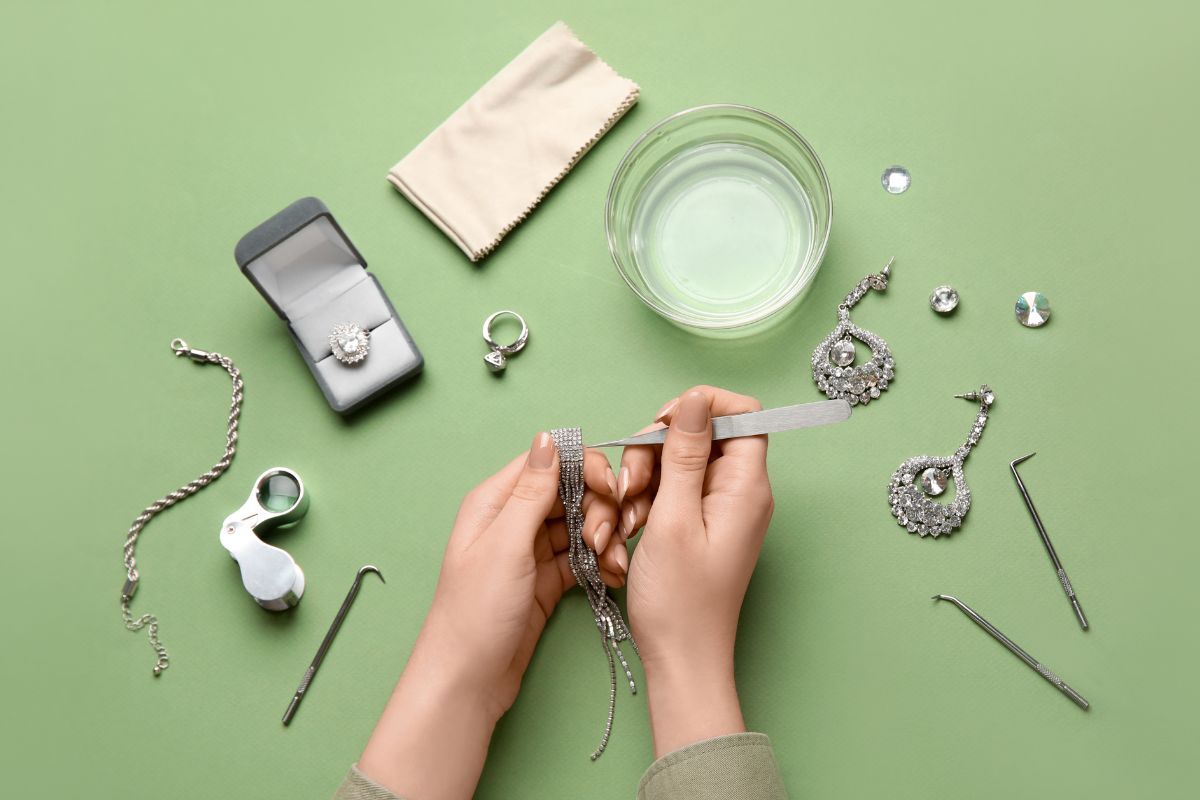
When I select diamond jewelry for everyday wear, I prioritize diamonds that can withstand routine activities. In terms of maintenance, regular cleaning and proper storage extend the longevity and brilliance of my diamonds.
Choosing Diamonds for Everyday Wear
In choosing diamonds for daily wear, I focus on the cut, setting, and mount. A bezel or half-bezel setting, for example, offers more protection compared to prong settings, thereby reducing the likelihood of chipping. I ensure the diamond's cut doesn't have sharp edges prone to knocks.
Maintenance and Regular Cleaning
To keep my diamond jewelry sparkling, I follow a simple cleaning routine:
- Prepare a solution: I mix mild dish soap with warm water.
- Soak my jewelry: Submerge the diamond pieces for 20-30 minutes.
- Brush gently: Using a soft-bristled brush, I clean around the diamond, taking care not to loosen any settings.
- Rinse thoroughly: I rinse my jewelry in a strainer under lukewarm water.
- Dry carefully: With a soft, lint-free cloth, I pat each piece dry.
Activities and Care Advice
I'm aware of the activities that can risk damage to my diamond jewelry. For instance, I remove my rings before gardening to prevent scratches or exposure to harsh chemicals. When involved in high-contact sports or activities that may jar my jewelry, removing or securing it prevents potential damage.
By adopting these specific practices, I ensure that my diamond jewelry remains in excellent condition, retains its beauty, and is secured from unnecessary wear or damage.
Frequently Asked Questions
In exploring the durability of diamonds, common inquiries often arise concerning their strength and potential breakability. Below, I've addressed some of the frequent questions regarding the resilience of these precious stones.
How much force is required to shatter a diamond?
While diamonds are the hardest known natural material, they can indeed shatter if subjected to a severe impact. The necessary force must be precise and typically substantial, applied at the right angle and position, such as a sharp blow to a diamond's weak point.
Is it feasible to damage a diamond by dropping it?
It is unlikely to damage a diamond by merely dropping it onto a surface like a hardwood floor, as diamonds require a precise strike to a vulnerable spot to cause significant damage.
Can the internal structure of a diamond develop cracks?
Yes, the internal structure of a diamond can develop cracks, known as inclusions or feathering, which can occur naturally or from impact. These flaws can potentially weaken the diamond and make it more susceptible to breaking with force.
What methods can potentially cause a diamond to break?
A diamond can break through direct impact with a hard surface or object, especially if hit at a vulnerable point. Other extreme conditions, such as high heat followed by rapid cooling, can also cause a diamond to crack or break.
Are real diamonds susceptible to cracking under normal conditions?
Under normal, everyday conditions, real diamonds are highly resistant to cracking and scratching. However, they are not invincible and can be damaged through forceful impact or if they have pre-existing internal flaws.
Does exposure to water increase the likelihood of a diamond breaking?
Exposure to water doesn't increase the likelihood of a diamond breaking. Diamonds are chemically inert and do not weaken or deteriorate upon contact with water.
Checkout some of our top collections:
Leave a comment
Please note, comments must be approved before they are published.
